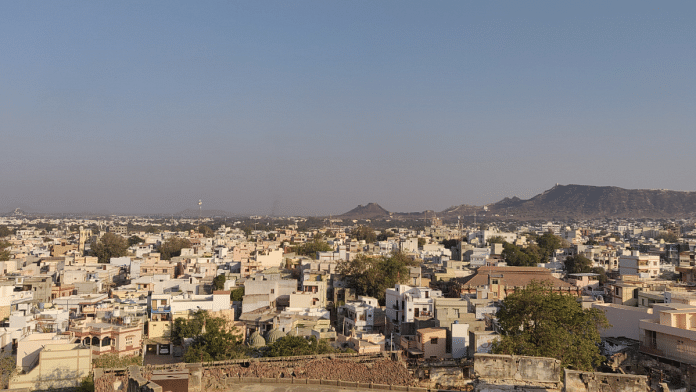New Delhi: After aspirational districts and blocks, the Narendra Modi government is planning to launch an ‘Aspirational Urban Local Bodies (ULBs)’ programme to improve municipal governance and the development of statutory towns across the country, ThePrint has learnt.
The idea is to help selected ULBs improve their physical and social infrastructure, including education and healthcare. There won’t be any special funding for this; rather, it will be done through the “convergence” of various central government schemes, according to officials at the Ministry of Housing and Urban Affairs, under which the programme will be implemented.
A statutory town is any one that has a municipality, corporation, cantonment board, or notified town area committee. According to the 2011 Census, India has 4,041 such towns but according to ministry officials, this has now gone up to 4,900.
According to three senior ministry officials, the plan will be implemented along the lines of the central government’s existing Aspirational Blocks Programme and Aspirational Districts Programme. While the former was launched in January this year to transform 500 rural blocks across 329 districts in the country, the latter was started in 2018 and aimed at the quick and effective transformation of 112 of India’s most underdeveloped districts.
The ministry is working on planning the contours of the programme and the criteria based on which cities will be selected, the officials confirmed to ThePrint, adding that work began earlier this month and the plan is to launch the programme soon.
“We are working on preparing the framework for the programme; it is in the nascent stage. We recently held stakeholder consultations with state governments and civil society members and urban governance experts,” one ministry official said.
States including Rajasthan, Odisha, and Uttar Pradesh are learnt to have participated in the stakeholder consultation.
ThePrint reached the Ministry of Housing and Urban Affairs for an official comment via telephone and WhatsApp. This report will be updated if and when a response is received.
According to government advisory body NITI Aayog’s website, districts under the Aspirational Districts Programme are ranked based on the incremental progress made across 49 Key Performance Indicators (KPIs) under five broad socio-economic themes — health and nutrition, education, agriculture and water resources, financial inclusion and skill development, and infrastructure.
The plan is to select a few local bodies, especially the laggard ones, and provide them the necessary assistance to improve both physical and social infrastructure and make the cities more “liveable”, another senior ministry official said.
“Discussions are going on about the selection criteria, as there are a lot of ULBs in the country. We are yet to decide on the number of ULBs to be taken up under the programme. The selection will be based on the size of the city, basically depending on its population, apart from other factors based on its performance in governance and financial health, etc,” a third senior official said.
While urban planning experts believe the initiative is a good idea, they also say that to bring about a substantial change in city governance, state governments have to play a proactive role.
“Anything substantive in terms of city-systems reforms needs state government leadership. The role of the Union government should be to provide incentives for city-systems reforms. Aspirational cities need to focus sharply on attracting capital and talent for economic growth and job creation,” Srikanth Viswanathan, CEO of the Bengaluru-based urban planning think-tank Janaagraha, told ThePrint.
According to Janaagraha’s report, ‘Annual Survey of India’s City-System (ASICS) 2023’, published earlier this month, 39 percent of India’s capital cities lack an active master plan while only nine cities have sectoral plans for key aspects such as sanitation, comprehensive mobility, and sustainability.
Also Read: Disasters put focus on cities’ ‘carrying capacity’. It’s a textbook concept, planners don’t use it
Tier- 2 and 3 cities need special attention
Urban development experts, including planners, say there is a need to focus on improving infrastructure in Tier-2 and 3 cities due to an existing infrastructure backlog and fast-paced urban growth driven by improved road connectivity. Shortages of funds and staff are among other pressing concerns in most ULBs, in addition to lack of master plans, they say.
Debolina Kundu, a professor at the Delhi-based National Institute of Urban Affairs, believes the time is ripe to focus on the development of small towns that are now witnessing rapid but unplanned urban growth.
“City governments or urban local bodies, in most cases, are not equipped to cater to the growing demands for social and physical infrastructure. A focussed scheme on the holistic development of statutory towns will help in their overall development,” she said.
While the ministry is in the process of deciding the contours of the ‘Aspirational ULBs’, some experts say that the selection criteria should also focus on the possible potential of the city to become a centre of growth.
Milind Mhaske, CEO of the Mumbai-based governance advocacy group Praja Foundation, said there is a need to assess the growth potential of the city and also how it can impact neighbouring areas “instead of just focusing on laggard ULBs@.
He believes that to strengthen ULBs and for the overall development of cities, devolution of powers from the state to ULBs has to happen. In the 12th Schedule of the Constitution, a total of 18 functions were to be transferred to ULBs. But the transfer has not happened, said Mhaske.
However, according to the Praja Foundation’s Urban Governance Index 2020, no state government has transferred all 18 functions to urban local bodies.
“Devolution of powers, capacity building, and helping cities make the most of all central and state government schemes is essential,” he said.
(Edited by Uttara Ramaswamy)



